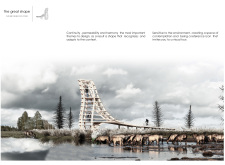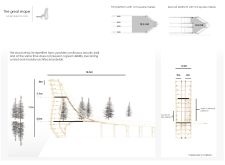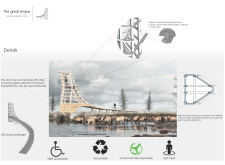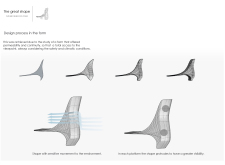5 key facts about this project
### Overview
Located in Pape, the bird observation tower integrates with the region's natural landscape while serving as an ecological observatory. The intent of the structure is to enhance visitor engagement with nature, providing both functional utility and a sense of place within the surrounding environment.
### Spatial Strategy
The design emphasizes continuity and permeability, characterized by a fluid, organic form that enhances the viewing experience. The tower features a gracefully sweeping silhouette reminiscent of bird wings, which ascends approximately 14.5 meters, creating elevated viewpoints for panoramic views of the wetland ecosystems. Two main observation platforms are integrated into the structure: the larger platform spans 12.5 square meters, facilitating extensive interaction with the scenery, while a smaller, 5.5 square meter platform offers a more intimate setting for birdwatching. The structured height and varying platform designs ensure both accessibility and safety for all users.
### Materiality and Sustainability
The construction primarily utilizes wood for its structural framework, leveraging its renewability and natural insulation properties. Steel is incorporated at the joints to reinforce structural integrity, while optional organic materials may be utilized for insulation and aesthetic enhancement. This selection not only supports ecological sustainability objectives but also integrates the tower with its natural surroundings. The tower is designed to minimize its ecological footprint, employing recyclable materials and promoting environmental awareness among visitors. A 50-meter-long footbridge enhances connectivity, facilitating access for both cyclists and pedestrians and encouraging interaction with the local ecosystem.






















































